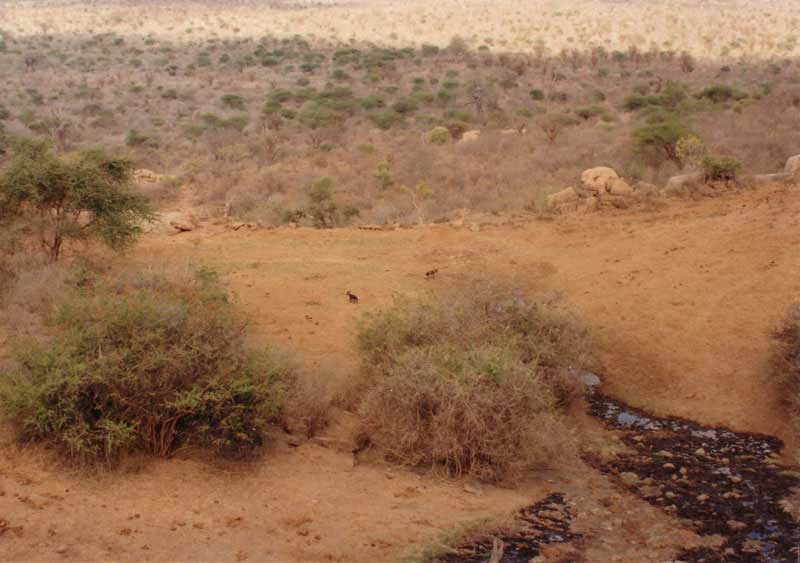At dusk some Kikuyu mums still shoo their children indoors with warnings that a mysterious black wild dog, Muthige, will snatch the ones who stay outside. But these days there's dwindling ecological space in the country for Muthige and errant toddlers have little to fear (as if they ever did).
Tsavo is a vast magical waste, the old hunting ground of the Wata elephant hunters who used longbows and clothyard poison arrows to kill elephants. By the late 1980s the elephant hunting was being done by Somali gangs with automatic weapons and a state of war existed between them and the anti poaching units.
Treading carefully but still very noisily through crackling grass and a brittle spiky grey thornscape made hollow by termites, on the lookout for wild dogs, I reflected that the buffalo is a marvellous beast - massive, lumpy and black, horns for hooking, a lowering gaze - best seen from a car. Often, they say, the crunch of approaching footsteps is the signal to rout the scouts, preferably pranging a few as well. A muffled crash as something lumbers off, in the right direction, and everyone smiles gently with relief.
Later we all held our breath again as we crouched in a lookout post over a spring at Nthalakana. The walls were scribbled with rude charcoaled poacher graffiti.
Down below two wild dogs had come to drink. One was blotched yellow, black and white as a harlequin. How it enlivened the drab brown ground. It was easy to picture the spectacle a troupe of these animals would have made. Its companion was a sad contrast, black but for its white paintbrush tail tip, and lame. Muthige? The ranger at my elbow was rapt, never having seen them here before. We had done pretty well to contact these animals in the enormity of Tsavo: it was a perfect moment.
